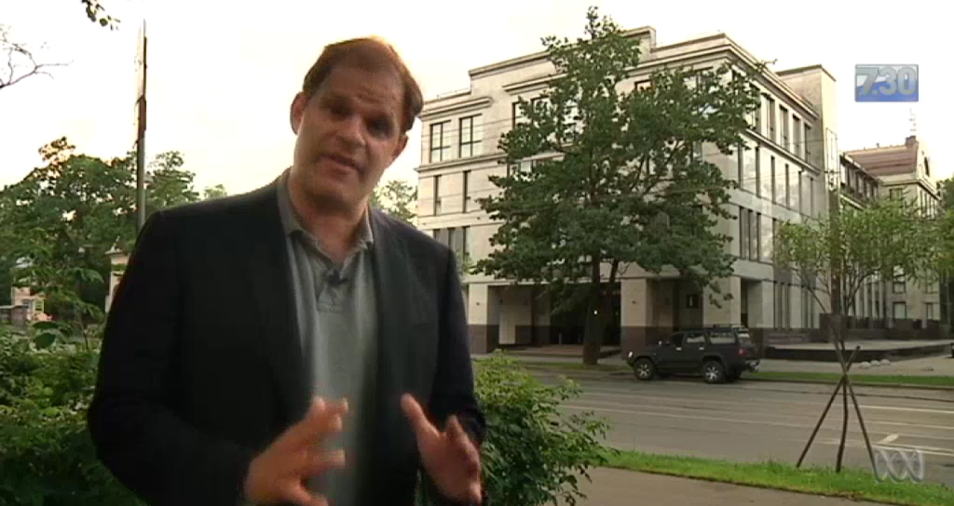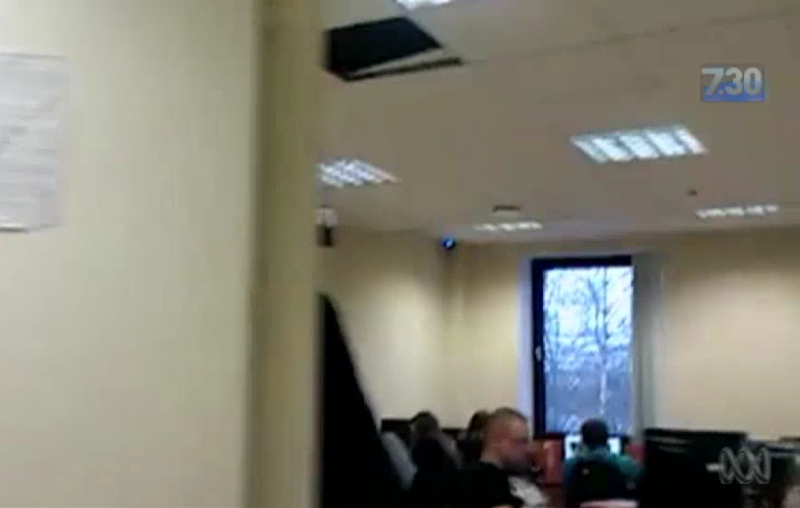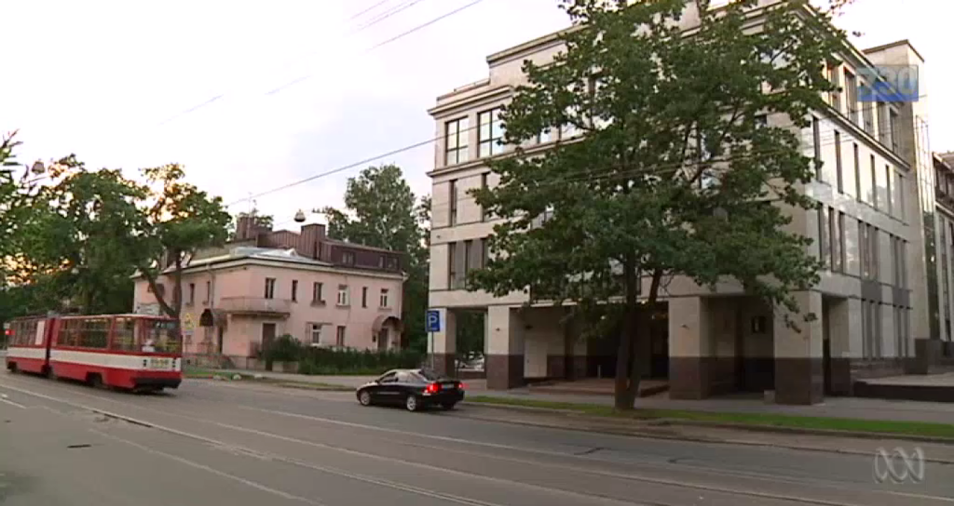ABC.Net.Au, “Twitter shuts down 201 accounts linked to Russian propaganda operatives who posted to Facebook”, 29 Sept 2017:
Twitter has shut down hundreds of accounts that were tied to the same Russian operatives who posted thousands of political ads to Facebook during the 2016 US election.
The company said it found 22 accounts which were directly linked to the 450 Facebook accounts, found earlier this month.
It also found a further 179 accounts related or linked to those Twitter accounts.
None of these accounts had been registered as advertisers, and all of them had already been or were immediately suspended, most for violating spam rules.
Twitter said Russian media outlet RT — which has strong links to the Kremlin — spent at least $274,100 on advertisements on the platform in 2016.
The three accounts — @RT_com, @RT_America, and @ActualidadRT — also promoted 1,823 tweets the company says “definitely or potentially targeted” the US market.
Those ad buys alone topped the $100,000 that Facebook had linked to a Russian propaganda operation, a revelation that prompted calls from some Democrats for new disclosure rules for online political ads.
Although Twitter’s disclosures in briefings to US congressional staff and a public blog post were its most detailed to date on the issue, the top Democrat on the Senate Intelligence Committee called the company’s statements “deeply disappointing”.
Senator Mark Warner, whose panel is investigating alleged Russian interference in the election, said Twitter officials had not answered many questions about the Russian use of the platform and that it was still subject to foreign manipulation.
Twitter has been criticised as being too lax in policing fake or abusive accounts.
Technology companies including Twitter, Facebook and Google were asked by intelligence committees earlier this week to testify at a public hearing on November 1 about alleged Russian interference.
The pressure on the companies reflects growing concern among politicians in both parties that social networks may have played a key role in Moscow’s attempts to spread disinformation and propaganda to sow political discord in the United States and help elect President Donald Trump.
Moscow denies any such activity and Mr Trump has denied any talk of collusion.

In front of building at 55 Savushkina Street in St Petersburg, Russia, where the Kremlin has a workforce of hundreds patrolling the internet as trolls.
Youtube video ABC.Net.Au, “Inside Russia’s Troll Factory: Controlling debate and stifling dissent in internet forums and social media”, 12 Aug 2015 -
Inside an anonymous building in St Petersburg, the Kremlin commands a workforce of hundreds that patrol the internet as trolls — assuming false identities online.
Their task is to control debate and stifle dissent in forums and on social media.
The department at the centre of this effort is officially known as the Internet Research Agency.
But its reputation has earned it another name by which it is widely known: the Troll Factory.

Andrei Soshnikov is the investigative journalist who has led the efforts to expose the Troll Factory.
“Generally, they produce lies in a 24-hour regime, seven days a week,” said Andrei Soshnikov, the investigative journalist who has led the efforts to expose the Troll Factory.
“In the morning, in the day, at night, something going on in world, or in Russia or St Petersburg, you will always find the comments from the Troll Factory.”
Soshnikov started monitoring the activities at the Internet Research Agency a few years ago, not long after he graduated from journalism school.
After his first reports were published, he hit the jackpot.
He was contacted by activist Luda Savchuk, who had been hired to work as a troll.
“I spent two months there,” Ms Savchuk told 7.30.

Photo: Luda Savchuck said she accepts the consequences that come with shining the light on Russia’s trolls. (7.30)
“I saw that this is really a big factory to produce paid comments, posts, pictures, video, any content we face on the internet is produced there.
“There are four floors there, very many departments dealing with social networks, LiveJournal (the popular Russian online forum), YouTube, forums with the websites of different cities.”
Working together, Ms Savchuk and Soshnikov published details of the Troll Factory’s operations.
At least 300 employees are believed to work in the building.
Ms Savchuk managed to capture the only video ever filmed inside — a few shaky seconds of trolls at work.

Ms Savchuk managed to capture the only video ever filmed inside — a few shaky seconds of trolls at work.
“News is sent to your computer with instructions about how it should be presented,” she said.
“It is not just objective information that is required, but in which tone it should be presented, to which conclusion one should drive a reader.”
When opposition leader Boris Nemtsov was shot dead within sight of the Kremlin in March, suspicion immediately fell on those with links to Russian president Vladimir Putin.
Ms Savchuk said the orders at the Troll Factory were handed down quickly.
“They were just told: ‘Nemtsov is killed. Everyone should urgently concentrate on this job. We shall write this and that’,” she said.
“On that day they were writing that it was a provocation against the authorities, that he was killed by ‘his own people’.”
Kremlin moves focus to social networks
After smothering political dissent, the Kremlin is now targeting social networks.
They have been viewed as a threat since anti-Putin protests seemingly sprung up out of nowhere in late 2011.
The driving force behind the brief opposition surge was social media.
Journalist Andrei Soldatov writes about Russia’s security agencies and their extensive online surveillance.
“You don’t need any kind of organisations to do these things,” he told 7.30.
Andrei Soshnikov is the investigative journalist who has led the efforts to expose the Troll Factory
“And that frightened the Kremlin in 2011.
“They still believe social networks [are] a major tool that might, if you have any kind of crisis, help people to send people in the thousands to the streets.”
Right now, the priority topic for the Kremlin’s trolls is Ukraine.
As the war in eastern Ukraine has dragged on, the Troll Factory has played a key role in the huge Russian propaganda campaign to demonise the Ukrainian government.
“In Ukraine, you don’t have people, you don’t have someone you can talk to,” Soldatov said summing up the stereotypes reinforced by the Kremlin’s trolls.
“You have only fascists.”

The Troll Factory’s actual address is 55 Savushkina Street, St Petersburg.
The building is surrounded by cameras, and employees do not appreciate being filmed.
Consequences for revealing secrecy behind trolls
“You have not just enemies, but someone who [is] completely unhuman.”
7.30 tried to speak with someone from the Internet Research Agency, but the request was denied.
All of the companies listed in the directory in the building’s foyer are fake.
Soshnikov said none of them could be found on St Petersburg’s corporate register.
The secrecy makes Ms Savchuk’s revelations about the work going on here all the more exceptional.
“I think Luda is a hero,” Soshnikov said.

“I had serious concerns about my safety and I still have them now.” - Luda Savchuk.
“Here in Russia is big atmosphere, strange atmosphere, of fear, of lies. And not everyone will act as a normal citizen, or patriot, in this situation.”
Ms Savchuk and others are prepared to fight back against the methodical re-establishment of the security state in Russia.
She accepts the consequences that come with shining the light on Russia’s trolls.
“I had serious concerns about my safety and I still have them now. Because the people who run this factory are quite serious,” she said.
But she has no regrets.
“I did this with my eyes open.”

Posted by Irony: patriot American twitters probably Russian on Sun, 08 Oct 2017 13:41 | #
In this ironic age, one must assume that if you are followed by a “patriotic, pro-Trump, pro-American” account on Twitter, that it is actually alien, actually Russian!